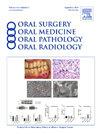Management and prevalence of cone beam computed tomography (CBCT) findings generating external referrals
IF 2
3区 医学
Q2 DENTISTRY, ORAL SURGERY & MEDICINE
Oral Surgery Oral Medicine Oral Pathology Oral Radiology
Pub Date : 2025-02-04
DOI:10.1016/j.oooo.2024.11.007
引用次数: 0
Abstract
Objective
A debate regarding the responsibility of reporting all cone beam computed tomography (CBCT) findings exists, including the incidental findings (IFs) outside the region of interest. The possibility of missing a relevant diagnosis needing further investigation needs emphasis. Hence, our study aims to report the most prevalent IF with their management protocol to guide the dental professional in the decision-making and referral processes.
Study Design
Records of patients referred to the Advanced Imaging Centre-School of Dentistry were retrospectively reviewed. CBCT interpretive reports completed by Oral and Maxillofacial Radiologists were analyzed (N = 1260). The radiographic findings were divided into 8 zones on the basis of on their location: (1) airway, (2) temporomandibular joints, (3) cervical vertebrae, (4) bone lesions, (5) teeth, (6) soft-tissue calcifications, (7) paranasal sinuses, and (8) other. Descriptive statistics were used for demographic characteristics and locations of the radiographic finding. Inferential analyses were performed. The frequency and prevalence were determined for each specific finding requiring further investigation using quantitative analysis.
Results
A review of radiographic reports (N = 1260) showed a total of 501 scans with Ifs, which represents 39.7% of the total sample analyzed. The most prevalent radiographic findings outside the areas of interest were found in the cervical vertebrae (18%), followed by the sinuses (15%), temporomandibular joint (8%), jaw lesions (7%), airway (5%), teeth (5%), soft tissue calcifications (5%), and other (1%).
Conclusions
The most prevalent findings requiring referral were carotid atheroma (2.7%), osteoarthritis of cervical vertebrae (0.97%), jaw lesions (0.86%), adenoid hypertrophy (0.86%), and paranasal sinus pathology (0.73%). These entities were further explored, and guidelines were reported to help the dentists in the identification, decision making and referral processes. The management protocol proposed by our study should be used as a guideline for external referrals and follow-ups.
求助全文
约1分钟内获得全文
求助全文
来源期刊

Oral Surgery Oral Medicine Oral Pathology Oral Radiology
DENTISTRY, ORAL SURGERY & MEDICINE-
CiteScore
3.80
自引率
6.90%
发文量
1217
审稿时长
2-4 weeks
期刊介绍:
Oral Surgery, Oral Medicine, Oral Pathology and Oral Radiology is required reading for anyone in the fields of oral surgery, oral medicine, oral pathology, oral radiology or advanced general practice dentistry. It is the only major dental journal that provides a practical and complete overview of the medical and surgical techniques of dental practice in four areas. Topics covered include such current issues as dental implants, treatment of HIV-infected patients, and evaluation and treatment of TMJ disorders. The official publication for nine societies, the Journal is recommended for initial purchase in the Brandon Hill study, Selected List of Books and Journals for the Small Medical Library.
 求助内容:
求助内容: 应助结果提醒方式:
应助结果提醒方式:


